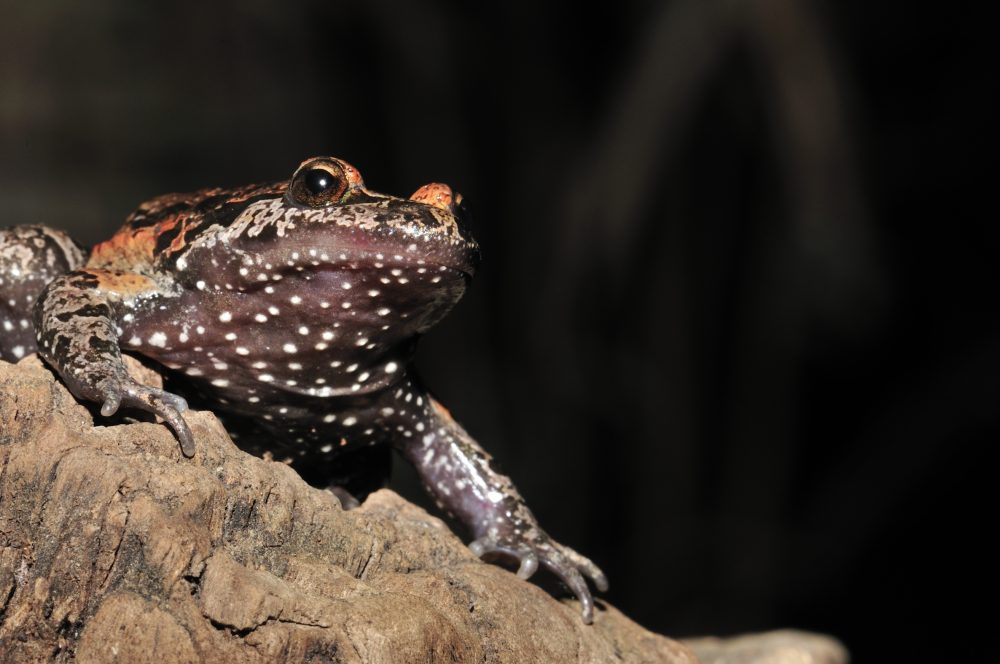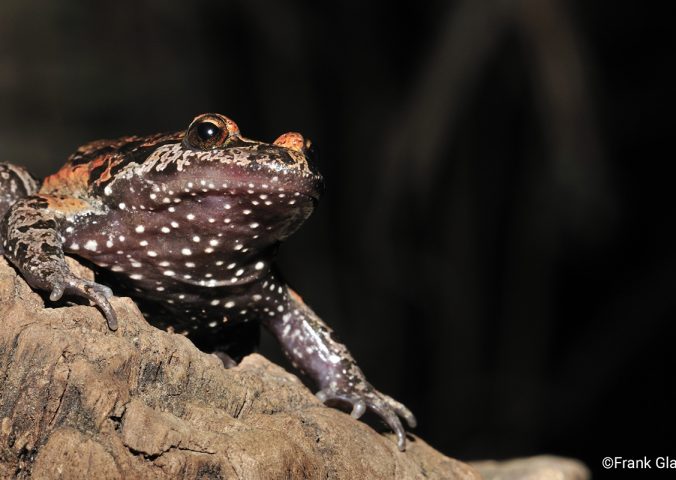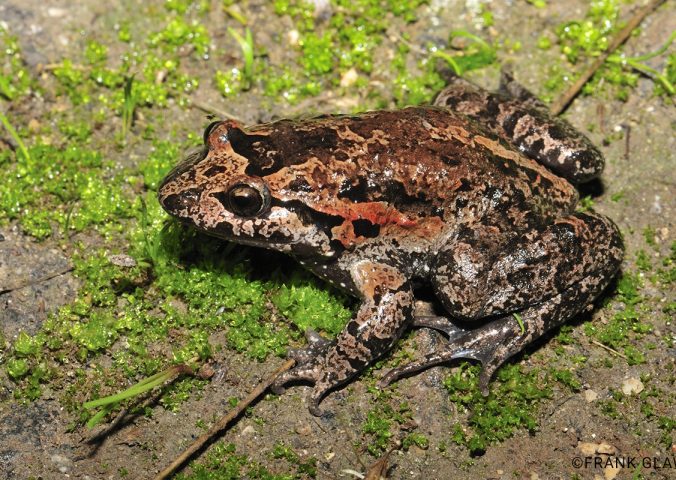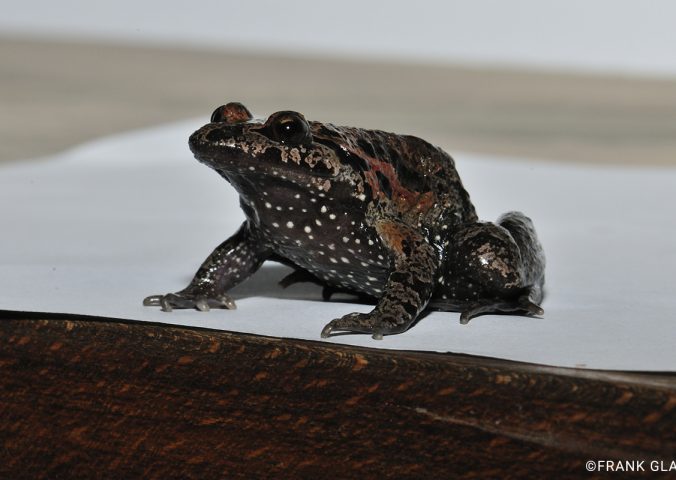About
The Critically Endangered Hula painted frog, of Israel, was believed extinct until its rediscovery in November 2011.
It was previously known from just two records; a collection in 1940 found two individuals and two tadpoles, and a second in 1955 found a single individual. All the individuals located in 2011 were within an area of 1.25 ha, with the majority of them being discovered in terrestrial habitat.
The Hula painted frog is the only species in its genus, and one of only 12 species in its entire family! This family of frogs, Alytidae, diverged from all other amphibians more than 150 million years ago, in the Jurassic Period. This is around the same time we last shared a common ancestor with kangaroos, koalas and wallabies!
Since its rediscovery several individuals have been found around a single pond, though fewer than 20 specimens have ever been found. The Huleh marshes were drained in the 1950s in an attempt to both eradicate malaria and to make the land suitable for agricultural use. However, the surviving patch of marshland was designated a nature reserve, and researchers now plan to determine whether this species occurs elsewhere in the Hula Valley.
Although the nature reserve is well-managed, it functions as a refuge for many water birds, and elevated predation pressure is thought to be major threat to the remaining amphibian populations. The Hula painted frog is protected by national legislation in Israel and there are plans to undertake a monitoring effort on this species.
- Order: Anura
- Family: Alytidae
- Trend: decreasing
- Size: 40mm
EDGE Score
Distribution
This species has been recorded on the eastern shore of Lake Huleh, Israel, and the northwest edge of the Hula swamps. It seems possible that it could once also be found in adjacent parts of the Syrian Arab Republic. It was recently found in the Hula Nature Reserve at 65 metres above sea level, which is less than 5 km away from its former sites.
Habitat and Ecology
The Hula Painted frog has only been found in the vicinity of a single pond in Israel and found terrestrially in detritus among reeds and blackberry up to 20cm deep. Its ecology is not well studied but it is known to be a larval-developing species – meaning tadpoles will emerge from the eggs.





